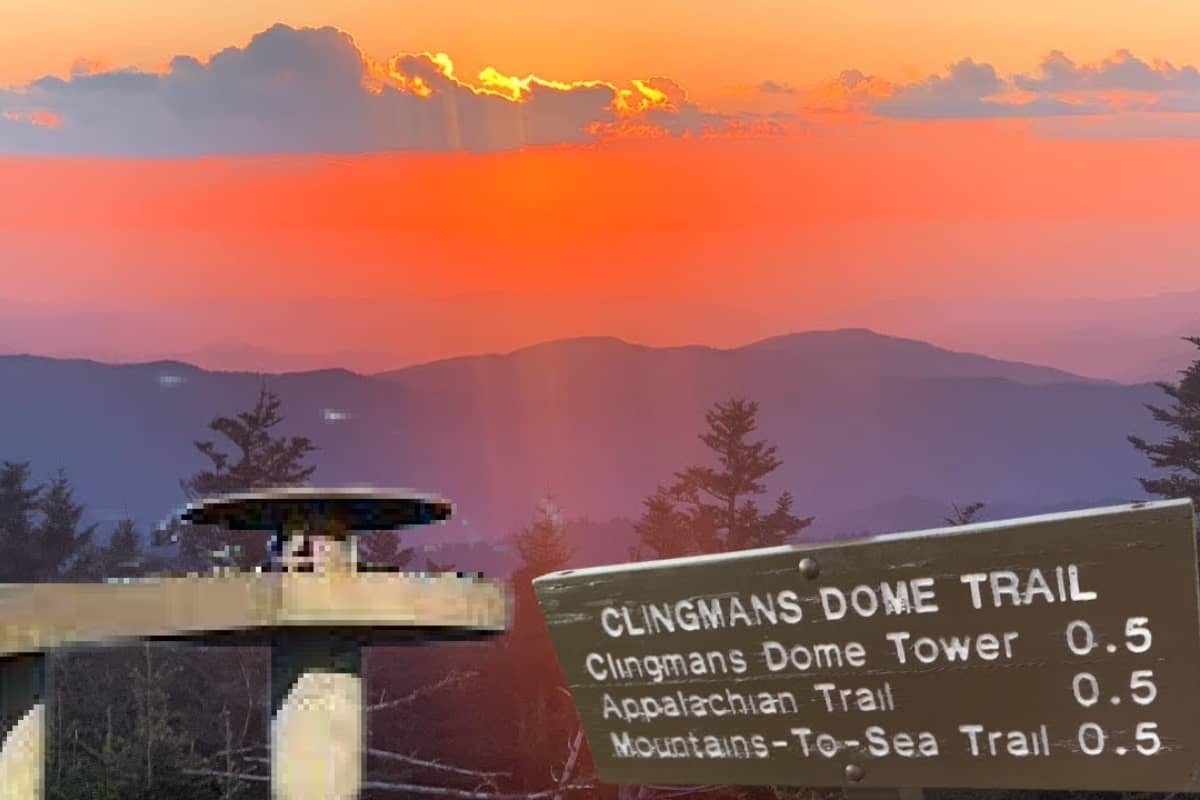Clingmans Dome, the highest point in Tennessee and the Great Smoky Mountains National Park, offers breathtaking views and a unique hiking experience. However, this iconic destination is not without its challenges. From unpredictable weather to wildlife encounters, the Dome presents dangers that could turn a scenic adventure into a risky endeavor. Here’s what you need to know to stay safe on your visit to Clingmans Dome.
1. Steep Inclines and High Elevation
Clingmans Dome is a short hike, just half a mile from the parking lot to the observation tower, but don’t let the distance fool you. The trail has a steep gradient, with a 13% incline that can quickly tire visitors, especially those unaccustomed to strenuous hikes at high altitudes. At 6,643 feet, the oxygen level is lower, and this can make the climb more difficult for elderly visitors, those out of shape, or anyone with respiratory issues.
Moreover, the air gets thinner as you ascend, and this can lead to altitude sickness in some hikers. Symptoms like headaches, dizziness, and shortness of breath may occur. It’s crucial to take your time and rest frequently. Benches along the way offer spots to catch your breath, but it’s still essential to be mindful of your physical limits.
2. Unpredictable Weather
Weather at Clingmans Dome can change rapidly. The summit is often 10 to 20 degrees colder than the lower elevations, and it’s not uncommon to encounter fog, rain, or even snow, depending on the season. During summer, temperatures rarely exceed 70°F (21°C), but severe thunderstorms are a common occurrence. The rainiest months are in summer, which can turn the trail slippery and obscure the otherwise spectacular views.
During the fall, while the autumn foliage is spectacular, temperatures can drop into the 40s or even 20s at night. Early snowfalls in October are also possible. If you’re visiting in spring or fall, it’s important to pack layers, as weather conditions can change dramatically in a short period. The wind chill at the summit can make it feel much colder than the temperature suggests, so bringing a jacket is a must, even in seemingly warm weather.
3. Winter Snow and Ice Hazards
While Clingmans Dome is accessible year-round, the road leading to it (Clingmans Dome Road) is closed to vehicles from December through March due to snow and ice. Even when the road is closed to cars, adventurous visitors may attempt to hike or cross-country ski the seven-mile stretch to the summit. This can be a rewarding experience but also a dangerous one.
The road and trail are not maintained during the winter months, meaning they can be covered in thick layers of snow and ice. Slips and falls are common, especially if visitors are not equipped with proper winter gear. It’s easy to underestimate the conditions in winter, as the road is steep and winding, adding to the risk. Anyone attempting to visit Clingmans Dome in winter should be experienced in winter hiking or skiing and prepared for extreme weather conditions.
4. Overcrowding and Parking Challenges
Clingmans Dome is one of the most popular spots in the Smoky Mountains, and this means that it can get crowded, especially during peak seasons like summer and fall. The parking lot at the end of Clingmans Dome Road fills up quickly, often by mid-morning, and overflow parking along the road adds to the congestion. This creates a dangerous situation as cars are parked on narrow shoulders, sometimes forcing hikers to walk along the road before reaching the trailhead.
Early arrival is essential to avoid parking difficulties. Visitors aiming to catch the sunrise or sunset are particularly encouraged to arrive early, as the small parking area tends to be overwhelmed by midday. The crowded conditions can also make it harder to enjoy the otherwise serene experience, as the observation tower is often packed with people.
5. Limited Cell Service and Emergency Access
Cell service is limited or nonexistent in many areas around Clingmans Dome. This means that if you get lost, injured, or experience an emergency, it may be difficult to call for help. While the trail is well-marked and relatively short, emergencies can still happen, particularly for those unprepared for the altitude or weather conditions.
The isolated location also means that emergency response times can be slow. Rescue operations in the park can be challenging, particularly in bad weather, so it’s essential to hike with a buddy and let someone know your plans before heading out. Carrying a first aid kit and plenty of water is always a good idea, even on shorter hikes.
6. Wildlife Encounters
The Great Smoky Mountains National Park is home to a variety of wildlife, including black bears, which are commonly spotted near Clingmans Dome. Bears are generally shy creatures, but they can become aggressive if they feel threatened or if they are attracted by food. Visitors must follow park guidelines for storing food properly and disposing of waste to avoid drawing bears to the trail.
In addition to bears, other animals like coyotes and deer are commonly seen. While these animals are less dangerous than bears, they can still pose a risk if startled. Keep a safe distance from all wildlife, and never attempt to feed or approach any animals.
Final Thoughts
Visiting Clingmans Dome is a rewarding experience with stunning panoramic views and a peaceful connection to nature. However, it’s not without its hidden dangers. From the steep inclines to the unpredictable weather, winter conditions, and wildlife encounters, proper preparation is essential to ensure a safe and enjoyable visit.
Always check the weather forecast before heading out, wear appropriate clothing, and be prepared for the unique challenges that high-altitude hiking presents. Whether you’re tackling the Dome in the heat of summer or the crisp chill of autumn, understanding the potential risks will help you make the most of this Smoky Mountain treasure.






